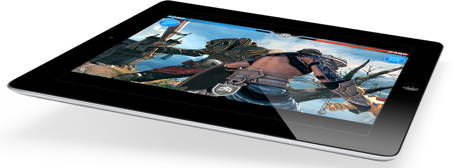How will Japan earthquake affect Apple's iPad supply chain?

Author's Note: A number of readers have complained that this article is insensitive to the pain and suffering of the Japanese people. Please accept my sincere apology. I have friends and former colleagues in Japan and I offered them my prayers for their safety and recovery last night. I have been to Japan and have a respect for its traditions and people. The devastation from the quake is terrible.
At the same time, my editorial mission here is to look at Apple, its products and markets. If that appears callous, I ask your forbearance. Some of the comments in the story were made several months ago, so please keep that context in mind.
Apple releases the iPad 2 on Friday and on the very same day a 9.0 earthquake rocks Japan, one of the centers of NAND flash production. What might the fallout from the quake be to Apple's product availability and rollouts as well as to prices?
According to analyst Jim Handy at Objective Anaysis Semiconductor Market Research, a number of Fujitsu and Toshiba manufacturing sites are located near the earthquake epicenter. In addition, Tokyo, Kobe and other centers are located on the east coast of Japan.
In a letter this morning he said the market in Japan as well as production for the world markets will be affected.
Over 40 percent of the world's NAND flash and roughly 15 percent of the world's DRAM are manufactured in Japan. Japan is a significant source of chips to support consumer electronics devices. A two-week shutdown would remove from production a sizable share of each of these. It doesn't take a large production decrease to cause prices to increase dramatically. Objective Analysis anticipates phenomenal price swings and large near-term shortages as a result of this earthquake.
Demand will be impacted as well since many electronics manufacturers are in Japan, and their consumption of semiconductors will be halted until earthquake damage is repaired.
Apple NAND suppliers are not all in Japan. According to iSuppli, Apple is supplied by Toshiba and Samsung as well as other vendors. However, Apple primarily purchases flash memory from "top flight" vendors, such as Samsung and Toshiba. Most of Apple's DRAM comes from Korean vendors and would be unaffected.
In the January financial call with analysts, Apple Chief Operating Officer Tim Cook talked about supply chain issues for flash as well as the Japanese market, which had been a surprise for the company.
And there are several other Asian countries doing extremely well. Japan is not in the segment that you're looking out, but Japan by itself, the revenue was up 83 percent year-over-year. And if you're familiar with the Japanese economy and the growth there, to grow 83 percent on the base that we're doing is stunning. And so we are placing more and more resource in these areas and continue to look for expansion possibilities throughout Asia.
Cook said in January that the company expected a favorable pricing environment for DRAM. And they had expected prices in certain commodities to fall.
Cook was asked about long-term commitments in on supply. He offered some details on flash supplies.
From our point of view on the design side, we design components where we believe we can innovate beyond what's available in the market. And the most recent example of this is the A4 chip. But with the A4 chip, we didn't feel like we had to invest in the fab itself and build the fab because we felt like they were good options in the market for doing that, but not good options in terms of buying a design, and so we really focused on design.
On the operational side of the house, as you probably remember, we've historically entered into certain agreements with different people to secure supply and other benefits.
The largest one in the recent past has been we signed a deal with several Flash suppliers back at the end of 2005 that totaled over $1 billion because we anticipated that Flash would become increasingly important across our entire product line and increasingly important to the industry. And so we wanted to secure supply for the company, and we think that, that was an absolutely fantastic use of Apple's cash. And we constantly look for more of these.
And so in the past several quarters we've identified another area and come to some recent agreements that Peter talked about in his opening comments, in that these payments consist of both prepayments and capital for process equipment and tooling. And similar to the Flash agreements, they're focused in an area we feel is very strategic. And so I'd prefer not to go into more detail about what specific area it's in, but it's the same kind of thinking that led us to those deals that led us to the Flash deal.
Of course, the iOS devices are flash based. But Apple is also showcasing the performance benefits of flash memory in its Mac products, such as the MacBook and MacBook Air. Solid-state drives are an option for MacBook Pros. Customers want the flash goodness.
So here's my guesstimates: Apple has locked in prices for flash memory components. It must have a reasonable supply already in the chain. And with $43 billion in cash, the company can get what it needs. But likely it won't have to stretch far.
As one of the world's biggest customers for the technology, it will get its supply before the smaller buyers — even if those "smaller" companies are Hewlett Packard, Motorola and even Samsung. In the manufacturing business, Japanese manufacturing giants and the arms of Korean chaebol conglomerates can't play in-house favorites. The biggest customer gets first choice.
That means that everyone else, big and small will feel the pinch more than Apple. Way more.
